If you enjoyed the drive over to Voulgaro to visit the Agia Irini monastery at Nisi (ref. Explore ! February 2023) then, although with a certain sadness, you will equally like the two short walks described below.
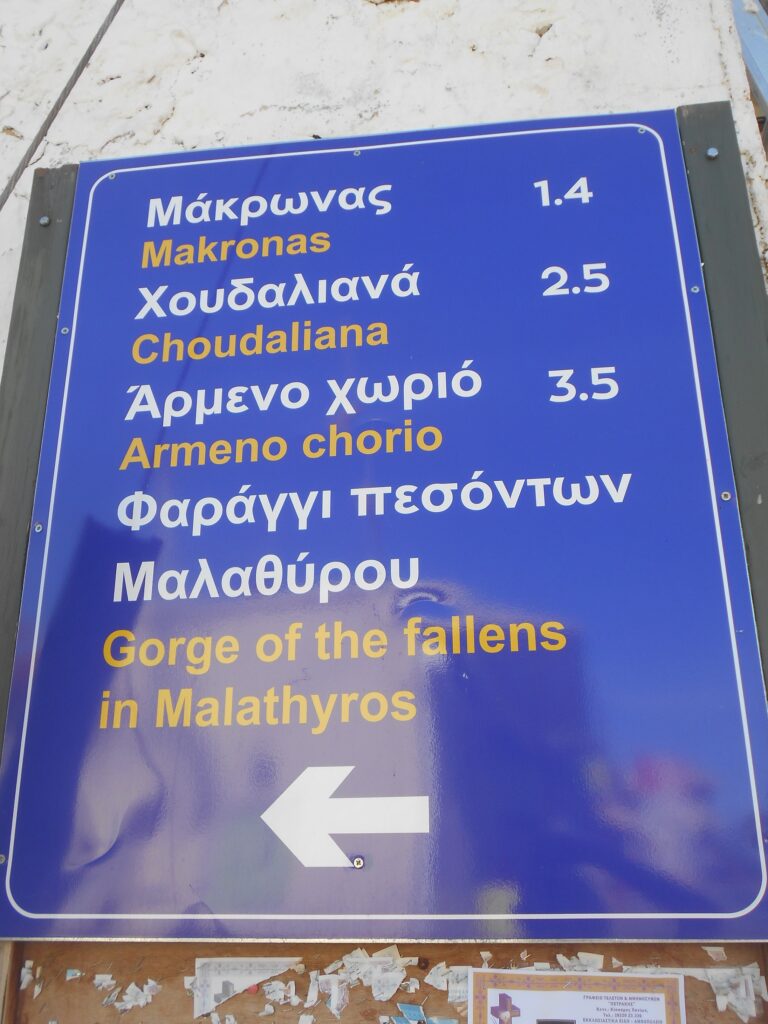
Drive the same scenic route from Paleochora as previously, through the Tyflos Valley, above Topolia Gorge, and park in Voulgaro ‘platea’, below Ag. Nektarios church. Adjacent is the excellent I Xara taverna, and after refreshments here, take the minor road opposite, signed to ‘Gorge of the Fallens in Malathyros’. Crossing the river, park close to another sign, an arrow pointing towards the Monument of 28-8-1944.
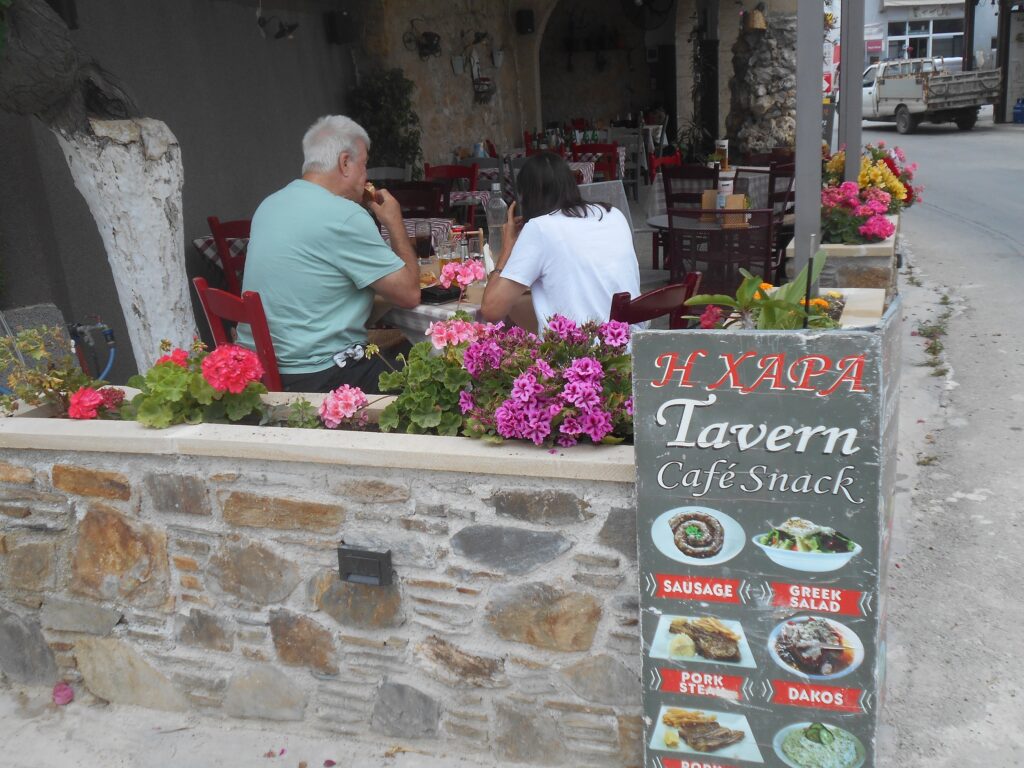
Beyond the church of Ag. Giorgos, the road becomes a track, and in 300m reaches a signpost to Makronas waterfall, but save this until later. Walk on, alongside the Anilios river, passing but not crossing an arched stone bridge, to reach the memorial. This is a peacefully serene location, although inevitably sad, sombre and melancholy.
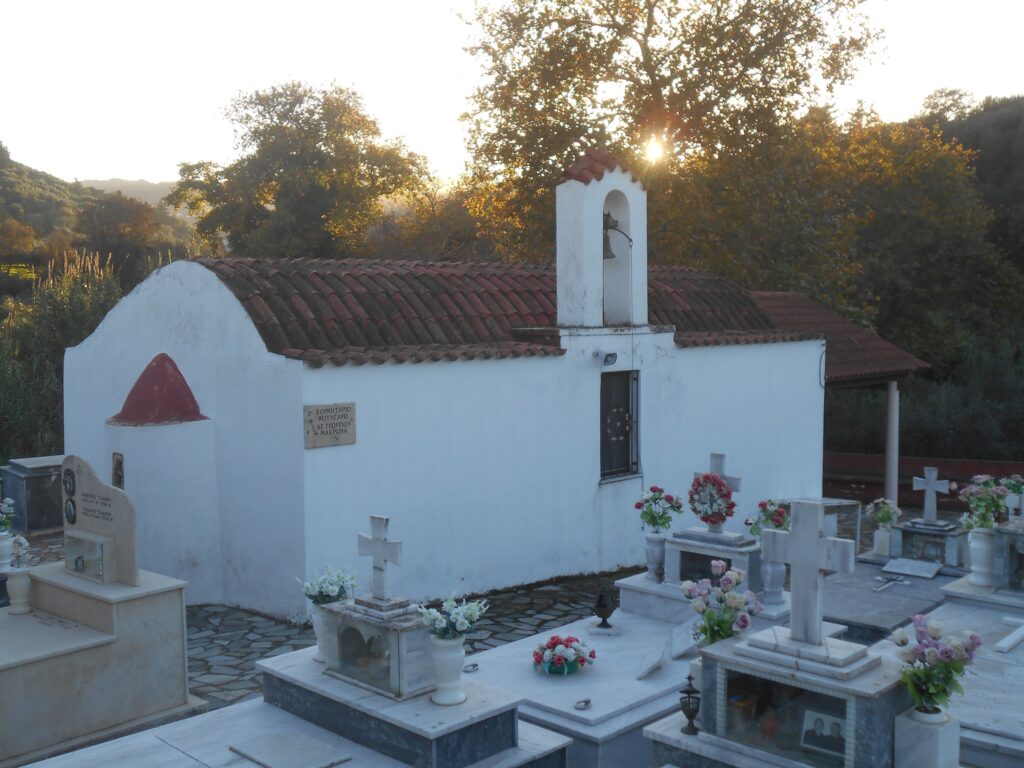
The track has brought us to the 61 Malathirians Execution Site, and several plaques name 60 local men, whose ages range from 13 to 66 years, who died here on a morning in late August 1944. With just one survivor, and therein lies a piece of history …
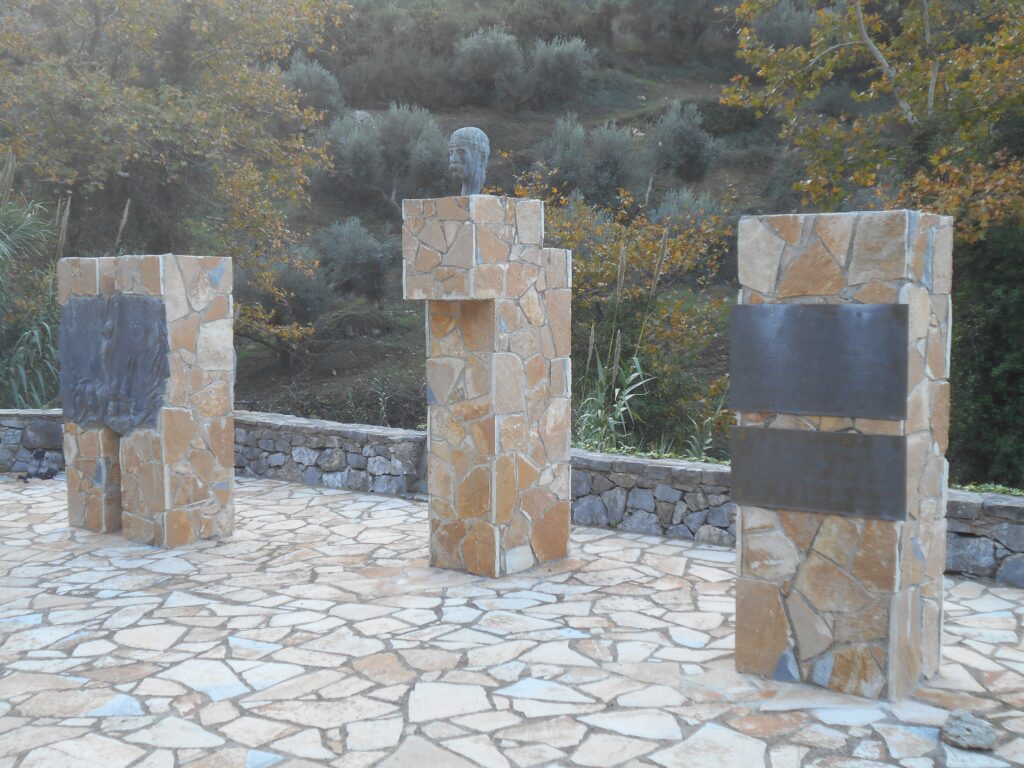
Some two decades ago, Lynne and I were walking through (upper) Malathiros, where we met, and were invited into the home of the daughter of Giannis Kartsonakis, the sole survivor of the massacre, and who had only recently died. And she told us his story. Her father, along with sixty others, practically the whole male population of the village, had refused, under duress and torture, to disclose the whereabouts of SOE personnel and resistance fighters in the area.
On that fateful morning, they were all taken here and shot. Giannis, unconscious and presumed dead, lived : the others died. In later years he was ordained into the Orthodox church, and became the Malathyros village priest. Miraculously, a bullet was deemed too dangerous and precarious to remove, and was never extricated. His daughter has campaigned many years for some reparation and atonement for this atrocity. There has been none.
Walk on if you wish, to where the path rises above the river for a view into the Halasses or Sassalos Gorge, described in an Explore ! article in November 2014. It was difficult then, and after the heavy rainfall during the winter of 2020/21, may well now be impassable.
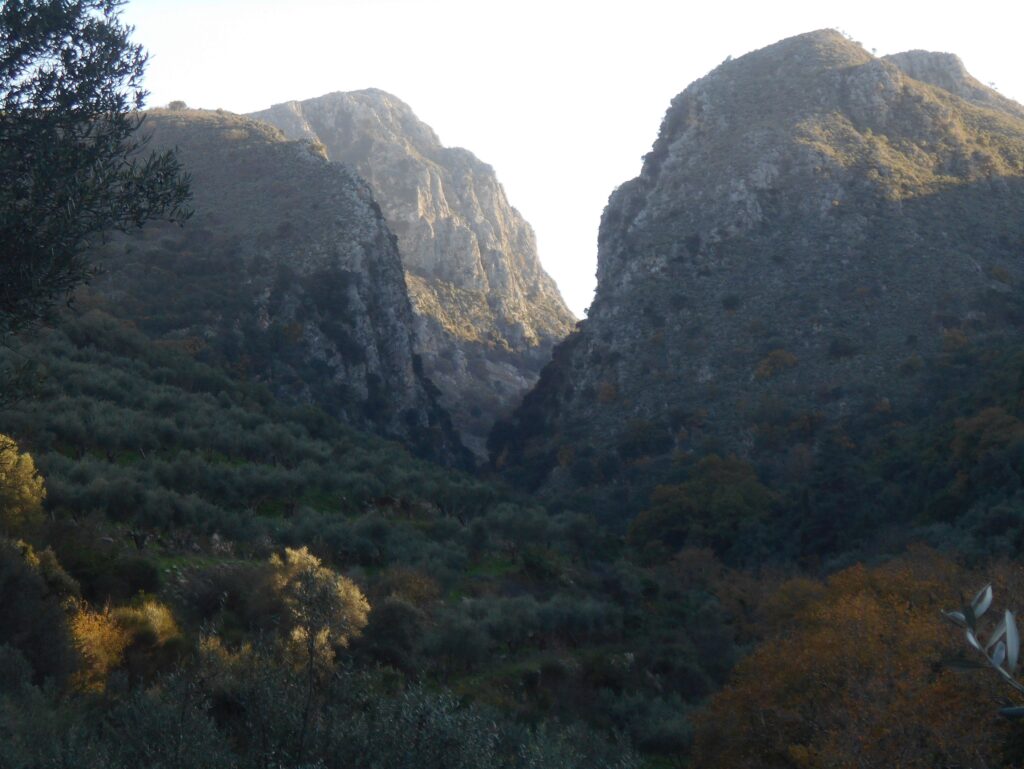
Return down the valley to visit Makronas waterfall, which is only a 15-minute diversion along a clearly marked path. Steps, and a couple of wooden bridges take you there, where the ‘cataract’ is pretty rather than spectacular, possibly the latter after a storm or heavy rain.
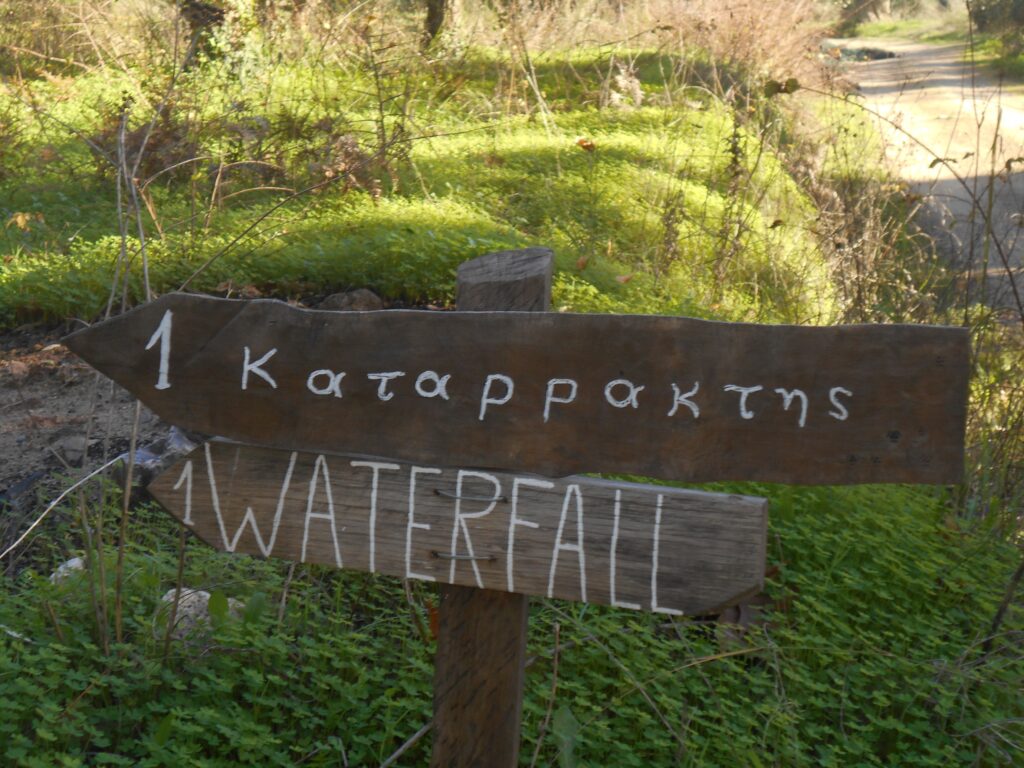
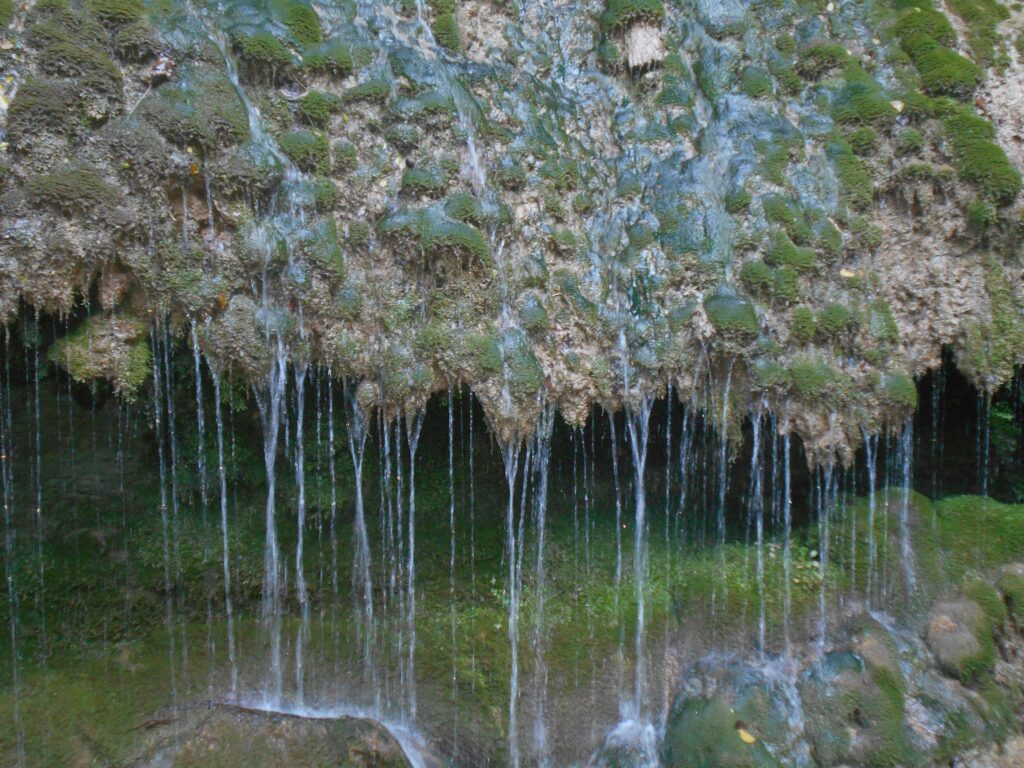
Two kilometres north of Voulgaro on the road to Kissamos, is Potamida, and scenery unlike anywhere else in Crete. Turn off the main road into the village, and drive or walk through, to signs (right) towards the church of Archangel Michael. Here, on the left, are the weirdly shaped ‘Komolithi’, soft clay structures reminiscent of similar at Cappodocia in Turkey. Safe to walk over, but not climb, the summits are topped with vegetation and small trees. The clay is presumably used in pottery and ceramics, for which Potamida has a reputation.
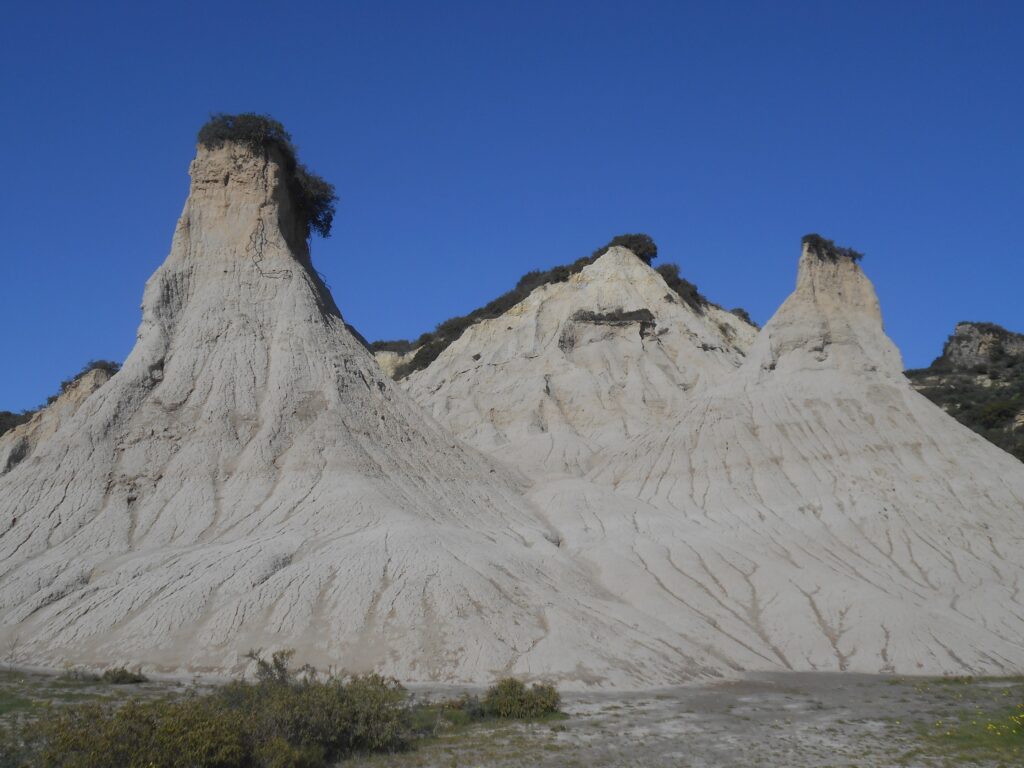
Nearby, again signed, is Potamida’s traditional watermill, in use for some 300 years until abandoned around 1960. We took a path down, to find it closed, but then Nicos, with a key, appeared from nowhere, and showed us inside. Restored in 2013, Nicos told us (in Greek), and explained how the mill ground flour from the area’s many cereal crops. Well worth a visit, to a small museum with some photographs, implements, the waterwheel and millstone still in place.
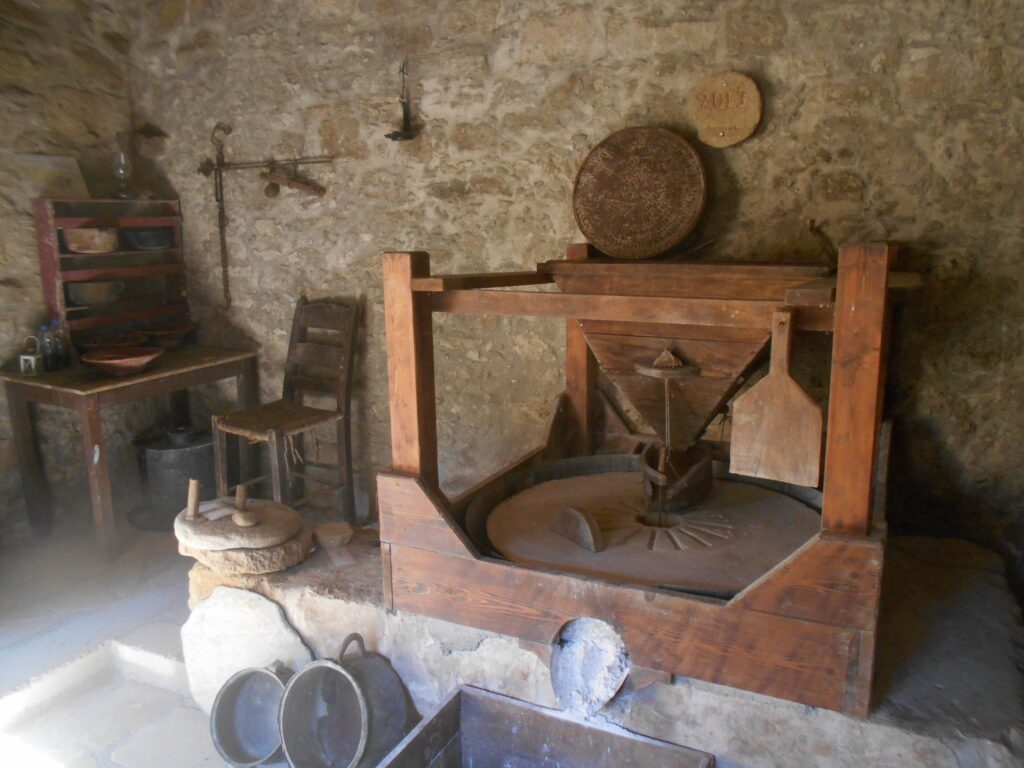
If you still have time and energy, consider driving a further 3km into Kissamos/Kastelli to visit the excellent and very informative Museum in the town centre,
Footnote
Annually, on the last Sunday in August, a ceremony is held to commemorate the martyrs of Malathyros, in the village centre, above the Platea 28 August 1944, and I drove there recently to attend the 79th Memorial. The churchyard was packed, with dignitaries in uniform, and all the village, many of the men in Cretan traditional dress. A church service preceded a homily in memory, poems, a lute soloist, and a Rizitika song by a male choir. Many wreaths were laid, and then the names of all sixty men, and their ages, were read by the now elderly son of Giannis Kartsonakis, the only survivor. A trumpet sounded, then a minute’s total silence, followed by the National Anthem of Greece.
It’s been very many years since I have been so emotionally moved and close to tears …
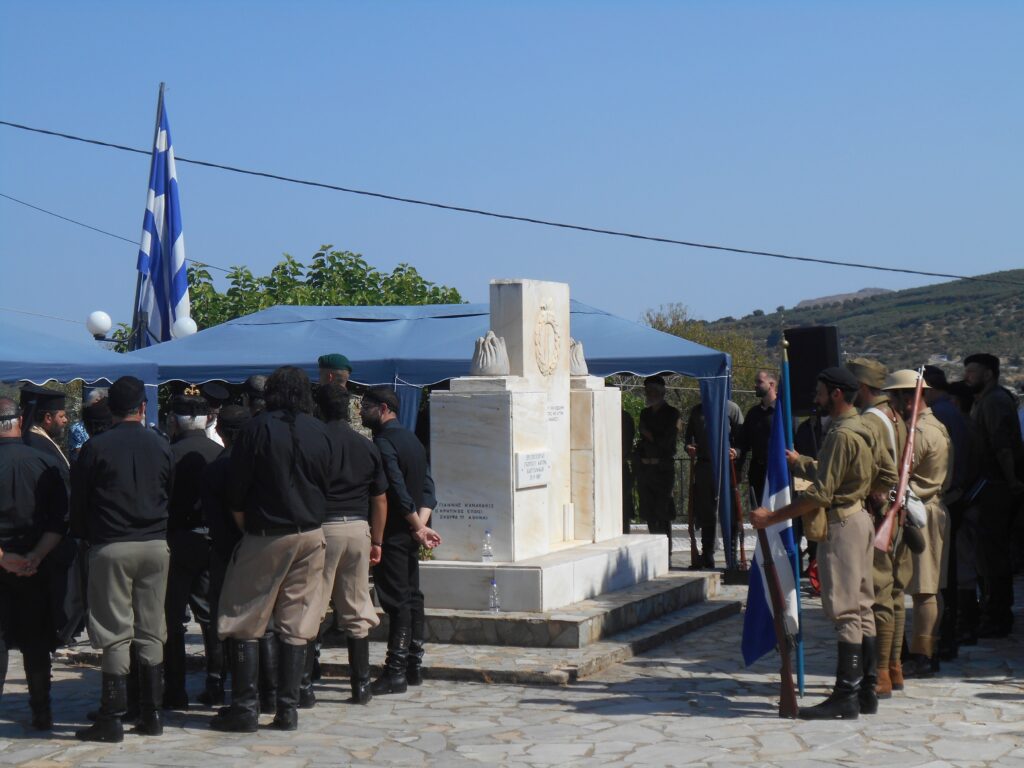
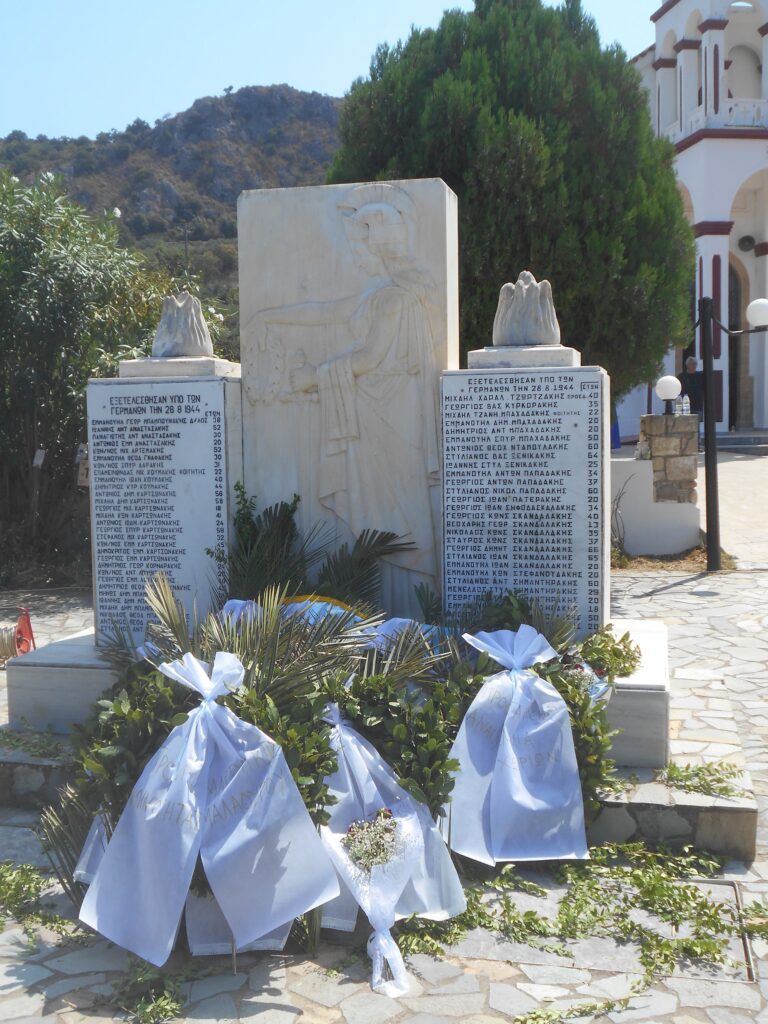


Recent Comments